In the vast tapestry of human history, Ancient Egyptian Mythology holds a special place, illuminating not just the spiritual beliefs, but also the societal structures and values of one of humanity’s earliest civilizations. This intricate belief system, comprising gods, goddesses, and legendary tales, offers invaluable insights into how our ancestors perceived the universe and their place within it. One such deity, standing out with a complex interplay of roles, is Set. Often labeled as the ‘God of Chaos,’ Set’s character transcends simplistic categorizations. While chaos was an integral part of his essence, understanding Set requires delving deeper into the nuances and layers that constitute his being. In this journey, we will explore the multifaceted nature of Set, unraveling the intricacies that make him one of the most enigmatic figures in Egyptian lore.
| Origin | Ancient Egyptian Civilization |
|---|---|
| Classification | God |
| Family Members | Geb (Father), Nut (Mother), Osiris and Isis (Siblings), Nephthys (Sister and Consort), Anubis (Son, in some accounts) |
| Region | Egypt |
| Associated with | Chaos, Storms, Deserts, Warfare, Disorder |
Section 1: Historical Overview of Set
In tracing the history and evolution of any deity, understanding their origins and subsequent mentions across various epochs provides a window into their significance and transformation over time. Set is no exception to this rule.
Origins and Early Mentions
The earliest known references to Set can be traced back to some of the most ancient Egyptian scriptures, notably the Pyramid Texts and the Coffin Texts. These texts, primarily inscriptions carved on tomb walls and sarcophagi, shed light on the primordial status and functions of this deity. Within these inscriptions, Set’s associations with certain natural phenomena and cosmic events lay the foundation for his multifaceted roles.
Further, Set held a distinguished position in the Heliopolitan Ennead, a group of nine deities worshipped primarily in Heliopolis. As part of this divine assemblage, Set’s relationships with other gods and his dynamics within this pantheon offer crucial insights into the theological framework of early Egyptian spirituality.
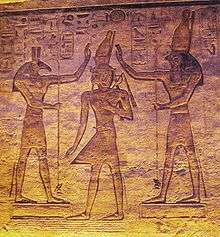
Evolution of Set’s Image Over Dynasties
Over successive dynasties, perceptions of gods invariably evolved, shaped by changing political, social, and theological landscapes. Set’s character underwent one of the most profound transformations. Initially revered as a protector and a powerful deity, his image gradually transitioned to that of an antagonist in various mythological tales. This shift can be attributed to a myriad of factors, ranging from political upheavals to shifts in theological narratives.
Of particular note is the Second Intermediate Period of ancient Egypt. During this era, Set experienced a renaissance of sorts. Amidst the political turmoil and fragmentation of the kingdom, Set, traditionally associated with chaos and storms, was elevated and worshipped as a national deity. His temples, rituals, and festivals gained prominence, reflecting a societal attempt to seek divine intervention in restoring order and unity.
In understanding Set, it’s essential to recognize these fluctuations in his stature, as they mirror the ebb and flow of ancient Egyptian society and its ever-evolving relationship with divinity.
Section 2: The Dual Nature of Set
Ancient Egyptian deities, much like the society that revered them, are intricate and multifaceted. Among them, Set stands out, not merely for his roles but for the duality inherent in his character. This duality paints a vivid picture of a god who simultaneously embodies protection and chaos, a guardian and an antagonist.
Set as a Protector
In the grand tapestry of Egyptian myths, Set is often cast in a protective role, especially in his defense of the sun god Ra. One of the most pivotal tales depicts Set as a fierce defender, protecting Ra from the malevolent serpent, Apep. Each day, as Ra journeyed across the sky, Apep would attempt to consume him, plunging the world into eternal darkness. It was Set, with his unparalleled strength and tenacity, who stood as Ra’s champion, repelling Apep and ensuring the sun’s daily rebirth. This narrative underscores Set’s integral role in maintaining the cosmic order.
Further emphasizing his protective nature is Set’s association with storms and deserts. While storms might be seen as chaotic, in the context of Egypt—a land frequently besieged by external invaders—the fierce desert storms served as a natural defense, thwarting enemy advances. Set, as the embodiment of these forces, was perceived as a guardian, his tempestuous nature acting as a shield for the land he oversaw.
Set as an Antagonist
However, the same forceful attributes that made Set a protector also painted him as a figure of conflict. The most telling of these tales is his tumultuous relationship with Horus and his involvement in the murder of Osiris. Driven by jealousy and ambition, Set deceives and ultimately kills Osiris, setting off a series of events that pit him against Horus, Osiris’s posthumous son. Their legendary battles, filled with intrigue and divine intervention, showcase Set’s embodiment of chaos, strife, and disorder.
This duality, where he is both protector and antagonist, is emblematic of life’s inherent contradictions. Just as nature has its nurturing and destructive sides, so too does Set represent the balance of order and chaos, protection and strife.
Section 3: Iconography and Symbolism of Set
Ancient civilizations communicated their reverence, fears, and beliefs not just through tales and rituals but significantly through symbols and images. The iconography associated with a deity often provides direct insights into their perceived roles and attributes. Set, with his complex nature, is abundantly represented through varied symbols and depictions, each hinting at a facet of his character.
Physical Depictions
One of the most intriguing aspects of Set’s representation is the mysterious “Set animal.” This creature, exclusive to Set, is an amalgamation of various animals but doesn’t directly resemble any known species. With a curved snout, squared ears, and a body reminiscent of a canine or aardvark, the Set animal is an enigma, mirroring the god’s elusive nature. Its unique form suggests an animal that’s both formidable and singular, much like Set’s role in the Egyptian pantheon.
Another characteristic attribute of Set’s depiction is the use of the color red. In ancient Egypt, red symbolized chaos, disorder, and the desert – all elements intrinsically linked to Set. This color, often used to paint his image or represent regions associated with him, serves as a visual cue to his dominion over chaos and arid landscapes.
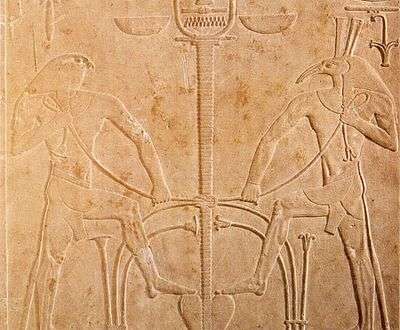
Symbols and Attributes
Beyond physical depictions, a range of symbols are associated with Set, each offering a lens into his varied roles:
- The Was-sceptre, a staff featuring the Set animal’s head, symbolized power and dominion. Its frequent association with Set underscores his once-esteemed position of authority and control.
- As previously mentioned, the Set animal itself, beyond physical representations, stood as a symbol of Set’s uniqueness and his link to the unknown or undefined.
- The thunderbolt, resonating with Set’s connection to storms, serves as a testament to his fierce, unpredictable nature and his role as a guardian against external threats.
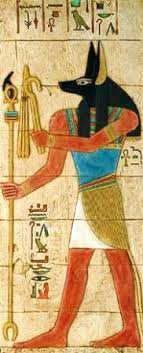
Furthermore, Set’s ties to certain regions, especially the Red Desert, reinforce his dominion over arid, chaotic landscapes. These regions, often inhospitable and wild, mirror Set’s raw, untamed essence.
Together, the symbols, colors, and regions associated with Set construct a vivid image, one that captures the essence of a god who is both revered and feared, protective and destructive.
Section 4: Set’s Legacy and Influence
The indelible mark of a deity is not just evident in the tales and myths from their heyday, but also in the legacy they leave behind and how they continue to shape culture, both ancient and modern. Set, with his intricate character, has left an influence that stretches from sacred ancient temples to modern cinematic representations.
Worship and Temples
The veneration of Set was concentrated in specific regions, each reflecting a particular facet of his character. Two of the most notable centers of Set worship were Ombos (Naqada) and Sepermeru.
Ombos, situated in Upper Egypt, was a focal point of Set’s reverence. Its strategic location near the desert made it a bastion against external threats, further solidifying Set’s role as a protector. Here, grand temples dedicated to Set stood as testament to his once lofty position in the Egyptian pantheon.
Sepermeru, on the other hand, held significance not just for its temples, but also for the myriad of rituals, ceremonies, and festivals dedicated to Set. These ceremonies, often elaborate affairs, ranged from offerings to enactments of his legendary battles. They served as communal events, strengthening societal bonds and reiterating Set’s importance in the cosmic order.
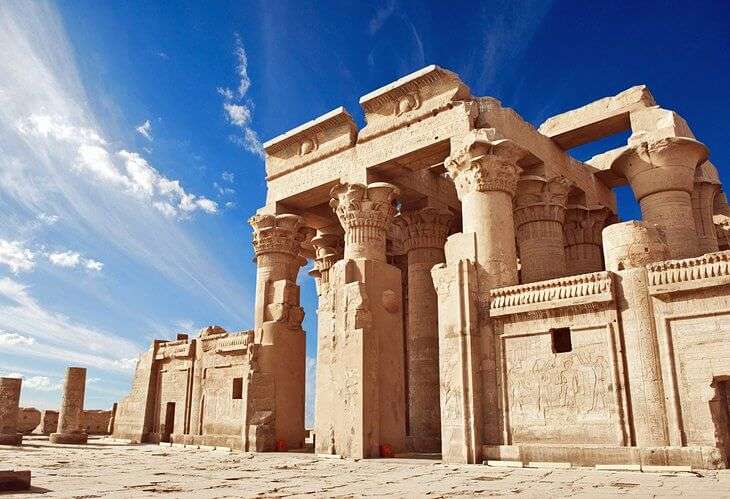
Set in Popular Culture
While ancient worship waned with the march of time, Set’s legacy endured, transitioning from temple walls to the screens and pages of modern media. His complex character offers a wealth of material for reinterpretation.
In modern movies, Set often emerges as a formidable antagonist, embodying chaos and challenge for protagonists. This portrayal, while drawing from ancient sources, often adds contemporary nuances, making Set relatable to new generations.
Literature, too, hasn’t remained untouched by Set’s influence. From academic analyses to fictional reimaginations, books have explored the depths of Set’s character, ensuring his tales continue to intrigue readers.
This crossover from ancient reverence to modern fascination underscores Set’s timeless appeal. His duality, his conflicts, and his strengths resonate with audiences, reminding us that the gods of yore still hold lessons and tales relevant to our times.
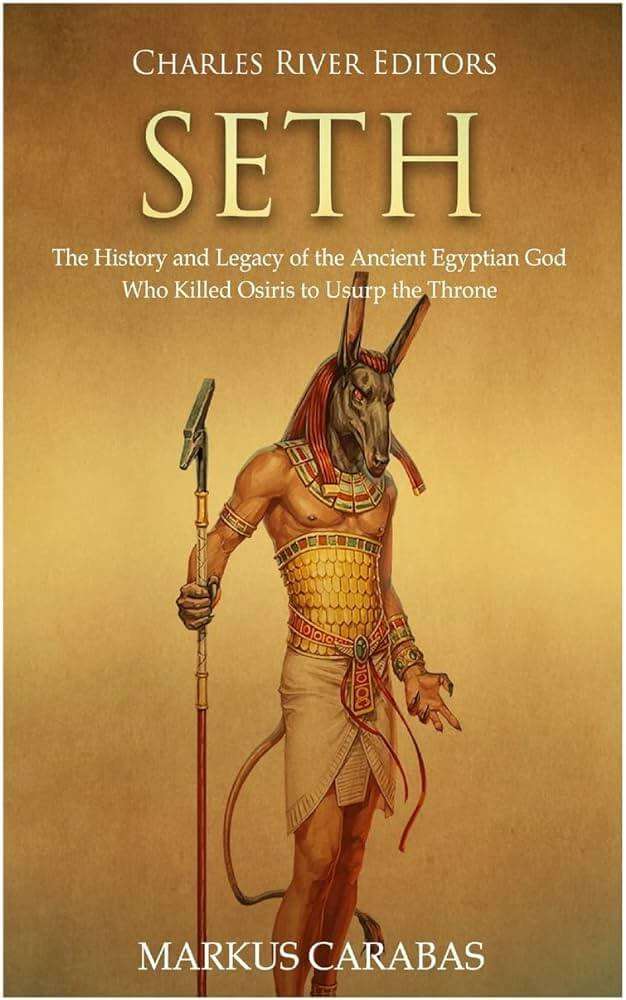
Section 5: Reflection on Set’s Complexity
Ancient deities, with their rich tapestries of tales and attributes, often present more than mere stories; they provide profound insights into the psyche of the civilizations that revered them. Set, with his myriad roles, serves as a prime example, inviting introspection into the nuanced understanding of morality, balance, and complexity.
Understanding Set Beyond Black and White
Modern perspectives, often influenced by clear dichotomies of good versus evil, might find it challenging to place a deity like Set neatly within such categories. But ancient Egyptian mythology, much like its intricate hieroglyphs, revels in layers and depths.
Central to this understanding is the concept of Ma’at, representing truth, balance, order, and justice. While Set might symbolize chaos and disruption, his presence is essential to Ma’at. Without the chaos Set brings, there’s no counterbalance, no challenge to overcome, no disorder to set the stage for order’s triumph. In essence, Set’s chaotic nature isn’t an antithesis to Ma’at but an integral component of it.
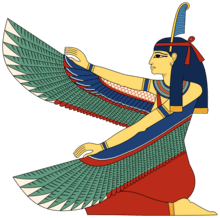
Recognizing the Duality in Ancient Gods
It’s crucial, especially in today’s rapidly simplifying world, to recognize the layers and dualities in figures like Set. Reducing him to just an antagonist or a mere symbol of chaos would be an oversimplification, stripping away the richness of his character.
Just as Set embodies both protection (in his defense against Apep) and conflict (in his battles with Horus), he serves as a reminder that entities, whether divine or human, can’t be pigeonholed into singular roles. Recognizing this duality, this ability to be both and neither, is a testament to the sophistication of ancient Egyptian spiritual understanding.
In reflecting on Set, we’re not just revisiting a deity’s tales but also exploring an age-old wisdom – a wisdom that acknowledges complexity, celebrates duality, and seeks balance amidst it all.
Conclusion:
Throughout history, ancient deities have been more than mere subjects of reverence; they have been mirrors reflecting the ethos, beliefs, and intricacies of the societies that birthed them. As we unravel the layers of Set, this reflection becomes evident, showcasing a deity both complex and enigmatic.
Set, the God of Chaos, is not just a singular entity bound by this title. As our journey has highlighted, he embodies a multitude of roles, from a fierce protector ensuring the sun’s daily rebirth to a formidable antagonist symbolizing chaos and disorder. His story is a testament to the ancient Egyptian understanding of balance—where chaos and order, good and evil, are not polar opposites but intertwined, essential components of the greater cosmic equilibrium.
In today’s rapidly changing world, where dichotomies often dominate discourse, there’s profound relevance in revisiting and understanding figures like Set. They remind us of the intricate tapestry of existence, where duality is not just accepted but celebrated. The tales of Set underscore the importance of embracing both chaos and order, recognizing that true balance lies not in the suppression of one over the other but in their harmonious coexistence.
As we look back at ancient Egyptian mythology, it serves as a beacon, illuminating the timeless lessons embedded within. Set, with his multifaceted nature, stands as a symbol of this wisdom, urging us to seek balance, embrace complexity, and understand that life, in all its forms, is a dance of opposites.
And with this reflection, we come to realize that ancient tales, no matter how distant, carry kernels of wisdom, insights, and perspectives that continue to resonate, guiding and enlightening us in our contemporary journey.
